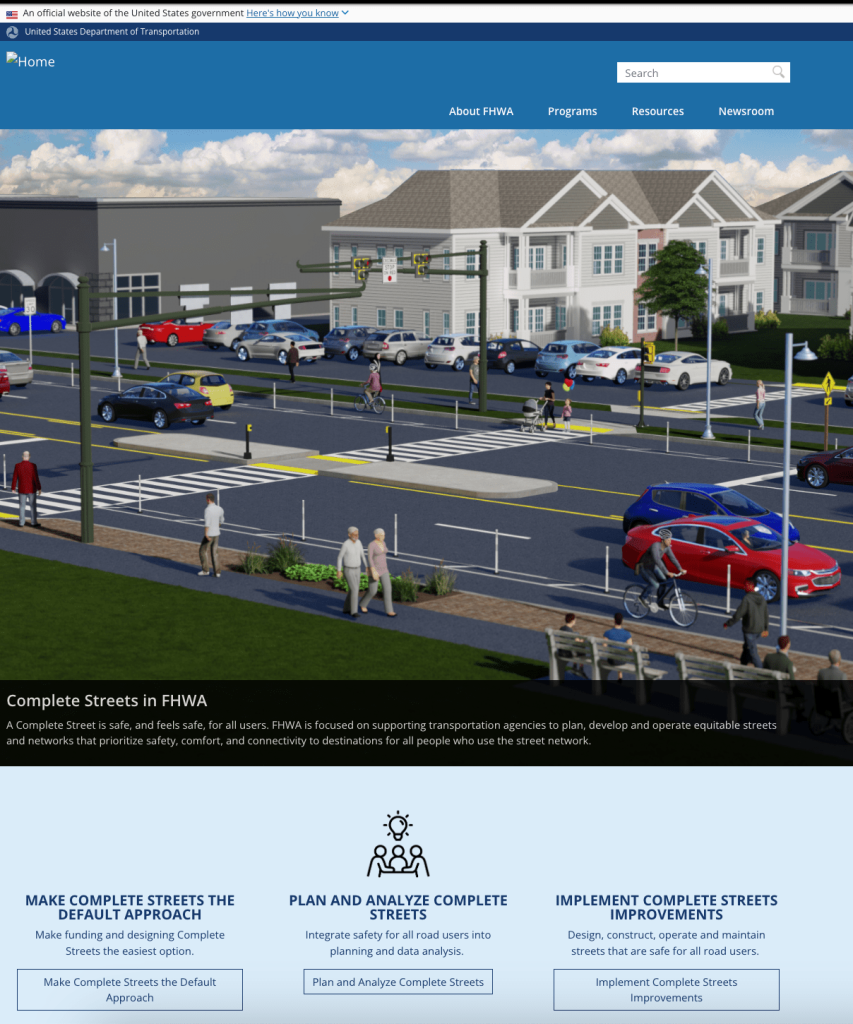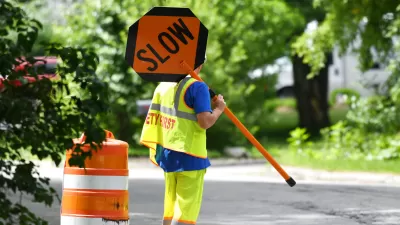Basic resources and information on building bike lanes and sidewalks, formerly housed on the government’s Complete Streets website, are now gone.

Street safety advocates are scrambling to recover and save critical resources that were deleted in the federal government’s purge of its websites, reports Kea Wilson in Streetsblog USA.
“Since it was first created in just 2022, the portal has brought together decades of largely publicly funded research on the safety impacts of things like bike lanes, sidewalks and road diets, which communities across America rely heavily on to prove to skeptics why those investments are worth making.”
“Far from a hotbed of radical left politics, the Complete Streets website simply gathered resources on how to design roads that feel safe for everyone, no matter how they move, advocates argue.” Now, life-saving guides and tools are less readily available to cities and organizations.
“I can't think of any legitimate reason why you would want to make someone's job harder if they're trying to make streets safer, especially when we know that the numbers are so bad to begin with,” said Heidi Simon, who leads the work of the Complete Streets Coalition for Smart Growth America.

This is the latest example of the U.S. federal government deleting practical information from its websites and the importance of preserving useful information, as discussed in Preserving Essential Information in an Uncertain World.
FULL STORY: ‘Complete Streets’ Webpage Falls Prey To Trump Purge

Alabama: Trump Terminates Settlements for Black Communities Harmed By Raw Sewage
Trump deemed the landmark civil rights agreement “illegal DEI and environmental justice policy.”

Planetizen Federal Action Tracker
A weekly monitor of how Trump’s orders and actions are impacting planners and planning in America.

The 120 Year Old Tiny Home Villages That Sheltered San Francisco’s Earthquake Refugees
More than a century ago, San Francisco mobilized to house thousands of residents displaced by the 1906 earthquake. Could their strategy offer a model for the present?

Ken Jennings Launches Transit Web Series
The Jeopardy champ wants you to ride public transit.

BLM To Rescind Public Lands Rule
The change will downgrade conservation, once again putting federal land at risk for mining and other extractive uses.

Indy Neighborhood Group Builds Temporary Multi-Use Path
Community members, aided in part by funding from the city, repurposed a vehicle lane to create a protected bike and pedestrian path for the summer season.
Urban Design for Planners 1: Software Tools
This six-course series explores essential urban design concepts using open source software and equips planners with the tools they need to participate fully in the urban design process.
Planning for Universal Design
Learn the tools for implementing Universal Design in planning regulations.
Clanton & Associates, Inc.
Jessamine County Fiscal Court
Institute for Housing and Urban Development Studies (IHS)
City of Grandview
Harvard GSD Executive Education
Toledo-Lucas County Plan Commissions
Salt Lake City
NYU Wagner Graduate School of Public Service





























